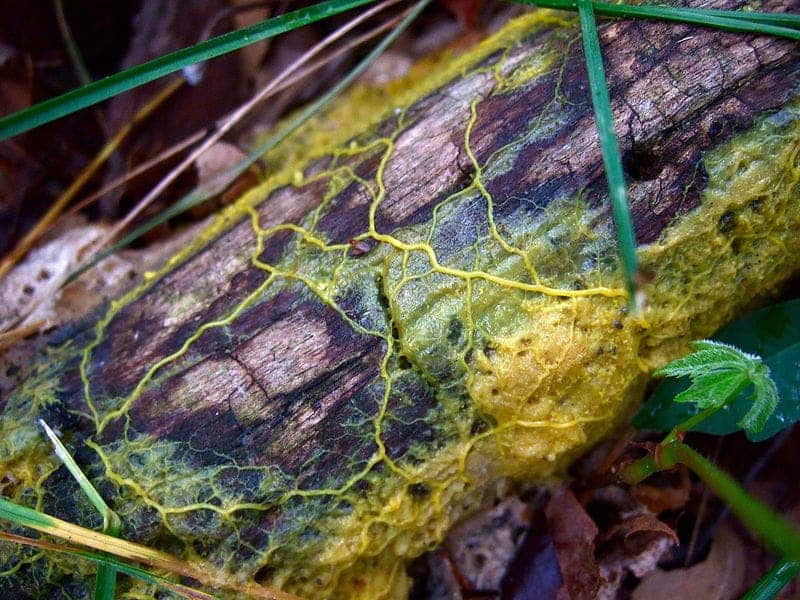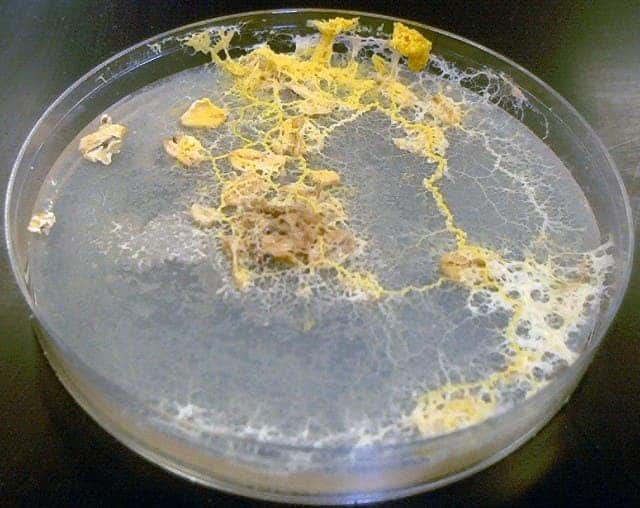A new study from the University of Toulouse found that intelligence and learning aren’t limited to organisms with brains. By studying the mold Physarum polycephalum they found it can, over time, learn to navigate even irritating environments.

Image via flikr user frankenstoen.
People have been arguing for ages on exactly what “intelligence” is. For some, it’s reflected in academic results, so intelligence can be measured by how well you can solve a math problem for example. Others think of it as the basis for flexibility and adaptation, and for them, one’s intelligence is measured by how well they perform when faced with novel and unfavorable conditions. Or it could be emotional intelligence, musical intelligence, the list goes on. All of these definitions, however, start from the assumption that intelligence is a product of the brain’s ability to rely on past experience to interpret present events. That’s just not true.
On Wednesday, scientists announced a discovery that turns this basic assumption on its head. A new study of Physarum polycephalum, the “many-headed slime,” found that this mold can learn about its environment despite lacking any type of central nervous system. This is the first demonstrated case of habitual learning in a brainless organism.
“Tantalizing results suggest that the hallmarks for learning can occur at the level of single cells,” the team wrote.
Habitual learning is the process through which behavior is altered as a response to repeated stimulus. Similar to physical adaptation — how calluses form on a guitarist’s fingertips to adapt to their pressing the strings over time — habitual learning is learning by doing. It’s what allows you to walk or drive or talk without you having to put too much mental effort into it. In more extreme circumstances, it helps people with phobias overcome the object of their fear through gradual but repeated exposure to it.
P. polycephalum cells merge into a single yellow blob when food becomes scarce and has previously shown a type of proto-memory in navigating its environments (and there are other examples of cells banding together in rough times or cellular memory that we’ve previously covered.) The Toulouse University team wanted to see if it could also learn from experience and alter its behavior in response.
This slime-blob grows fine root-like protrusions called pseudopods to move through its environment as it searches for food or shade. The team grew slime samples in petri dishes containing a gel made of agar, and placed these near other petri dishes with food — oatmeal in agar gel. The dishes were connected through a bridge of agar gel, which the mold would learn to crawl over to feed in about two hours. The researchers then coated this bridge with quinine or caffeine in concentrations that weren’t toxic but P. polycephalum found irritating.

At first, they note that the mold “showed a clear aversive behavior” — it halted for a short time, then started advancing at a much slower pace. Overall, it took more than three hours for the pseudopods to cross the bridge, seeking narrow paths to avoid the irritating substances. But as the days passed the mold overcome its initial reticence and started crossing much quicker, evidence that it had “habituated” to the quinine and caffeine, the team said — in essence, it learned to navigate through unfavorable environments.
“Our results point to the diversity of organisms lacking neurons,” they wrote, “which likely display a hitherto unrecognized capacity for learning.”
The findings suggest that life could learn way before it developed any type of nervous system. This discovery could offer us new insight into the behavior of other molds, even viruses and bacteria.
The full paper, titled “Habituation in non-neural organisms: evidence from slime molds ” Has been published online in the journal Proceedings of the Royal Society B and can be read here.






